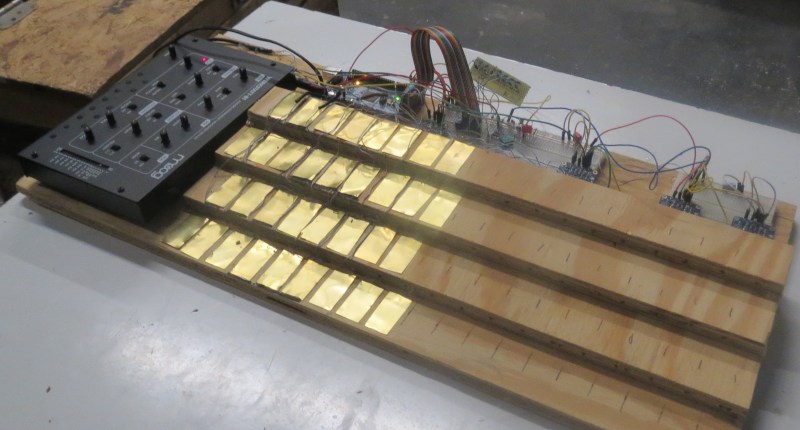[Ben Bradley], a member of Freeside Atlanta, built a capacitive touch Jankó keyboard for the Georgia Tech Moog Hackathon. Jankó Keyboards are a 19th-Century attempt to add a more compact piano keyboard. There are three times as many keys as a traditional piano but arranged vertically for (supposedly) greater convenience while playing–an entire octave can be covered with one hand. But yeah, it never caught on.
[Ben]’s project consists of a series of brass plates wired to capacitive touch breakout boards from Adafruit, one for each of the Arduino Mega clone’s four I2C addresses. When a key is touched, the Arduino sends a key down signal to the Werkstatt while using a R-2R ladder to generate voltage for the VCO exponential input.
The most recent Moog Hackathon was the third. Twenty-five teams competed from Georgia Tech alone, plus more from other schools, working for 48 hours to build interfaces with Moog Werkstatt-Ø1 analog synths, competing for $5,000 in cash prizes as well as Werkstatts for the top three teams.
We’re synth-fiends here on Hackaday: we cover everything from analog synths to voltage controlled filters.
Via Freeside Atlanta, photo by [Nathan Burnham].















If the wood is not sealed it will have a changing moisture content which will throw off things as well if it gets dirty or wet. Here is a simple idea for a good looking version. Cut in a jig of wood, uniform lengths of aluminum bar stock sold at any home hardware place.